#pollinator conservation
Link
It takes a bit of backstory to explain why this is good news.
Some endangered species laws were written before invertebrate conservation (insects, molluscs, etc.) was taken into consideration, so the language of the laws does not explicitly include these groups of animals. For example, the California Endangered Species Act states that endangered species can be mammals, birds, amphibians, reptiles, or fish.
Historically, aquatic invertebrates (lobster, clams, etc.) were included under the umbrella of “fish”, but courts have now ruled that terrestrial invertebrates can also be lumped into the “fish” category and therefore protected under the California Endangered Species Act.
Thanks to this ruling, threatened species of native bumblebee will now be able to receive legal protection.
#invertebrate conservation#bee conservation#pollinator conservation#save the bees#good news#environment#biodiversity#insect conservation#tw insect#tw bee
5K notes
·
View notes
Text
If you want to support local insect populations but can't garden or landscape - here is a list of keystone (especially important to the food web) species that can be grown in containers for each eco-region in the US. This would work well for folks who live in apartments with balconies or who can put out hanging baskets or window boxes.
24 notes
·
View notes
Photo

#wasps#wasp#entomology#pollinators#save the pollinators#insect#animals#nature#science#ecology#conservation#memes
2K notes
·
View notes
Text
*casually posts this at the same time to further my agenda of growing native plants instead of grass and shitty ornamentals*


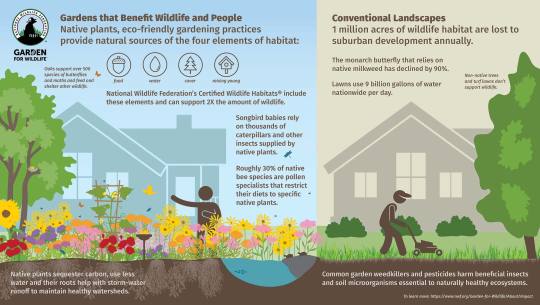


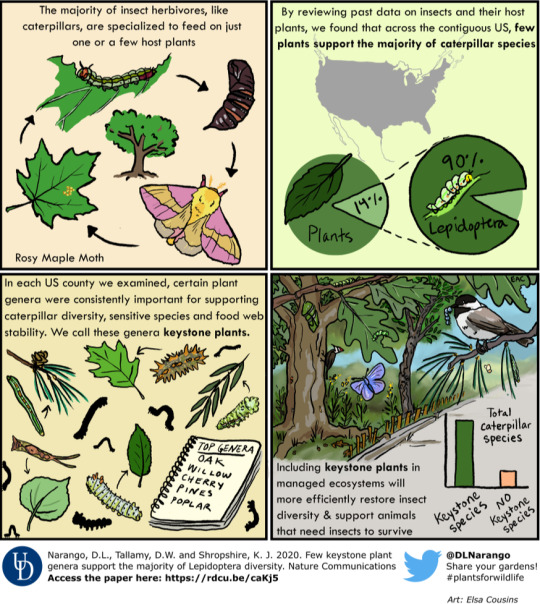

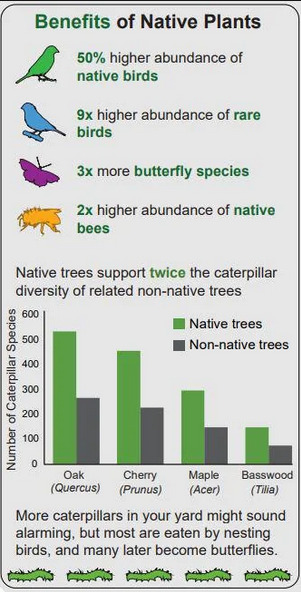

#gardening#water conservation#biodiversity#kill your lawn#native plants#native pollinators#pollinator garden#climate change#sustainability#environmental rehabilitation#habitat restoration#wildflowers#native flowers#animals#water crisis#didnt mean to post that grass one whoops. i think i skimmed it and wasnt thinking about it too much#but ig its true grass would be better than roads. lets just uh. make it native grass yaknow?
240 notes
·
View notes
Text
This is a big deal! While the importance of pollinators has been in the headlines more over the past few years, a lot of the focus has gone toward European honey bees, which are not native here in North America. This new plan focuses specifically on our native bumble bees, to include severely declining species like the western bumble bee (Bombus occidentalis).
What's really cool is that they've targeted the ecoregions that are likely to have the most species of threatened bumble bees. It doesn't mean they won't do anything elsewhere, but when you have limited resources you want to make them have as much impact as possible.
In the meantime, consider this a reminder to add some native plants to your yard, garden, and/or porch, say no to pesticides and other yard chemicals unless absolutely necessary, and spend a little time learning about the native pollinators in your area!
#pollinators#bees#save the bees#bumblebees#bumble bees#insects#invertebrates#animals#wildlife#native species#native plants#Washington#Washington State#PNW#Pacific Northwest#entomology#science#scicomm#endangered species#conservation
384 notes
·
View notes
Text
https://lnkd.in/efnMPSks CHAMPION STATUS FOR BUMBLEBEE CONSERVATION SITE One of UK’s rarest bumblebees settles in Kent after restoration of former farmland. Former farmland that has been transformed into a mosaic of habitats has been awarded “champion status” for a rare bee that has set up home there. The shrill carder bee, so named because of its high-pitched buzz, is one of the UK’s rarest bumblebees with just five populations remaining across England and Wales. But it has been given a boost by conservation work by the Woodland Trust at its Victory Wood site near Yorkletts, Whitstable, in Kent, which it bought in 2004. Emily Beament, Shane Jarvis 12 December 2022
#conservation#bees#bumblebees#caderbee#pollination#plants#woodlandtrust#work#biodiversity#flowers#meadows#restoration#restoredfarmland
634 notes
·
View notes
Text

Rusty-patched Bumblebee (Bombus affinis)
Eastern USA and Canada
Status: Critically Endangered
Threats: pesticides, habitat loss, non-native bees, climate change
#friendly neighborhood bee just wants to nom on flowers nom nom#artists on tumblr#pollinators#bug art#bee art#bumblebee#animal illustration#insects#conservation#insect#bee#usa#canada#north america
70 notes
·
View notes
Text
Bat Conservation International's page about bats and agave and the communities who rely on them both.
Features a series of videos and graphics, including a video that discusses tequila, mezcal, and bacanora (all three are alcoholic drinks made from agave).
59 notes
·
View notes
Text
#good news#environmentalism#science#environment#nature#animals#conservation#insecticides#bees#save the bees#grocery stores#agriculture#pollinators#protect our pollinators#neonics
17 notes
·
View notes
Text
Nacogdoches is one of dozens of Texas cities that have planted pollinator gardens, providing way stations for the long monarch migration
Take the people of Nacogdoches. Billed as the “Garden Capital of Texas,” the town of 35,000 has long promoted beautification efforts, including projects with the local Stephen F. Austin (SFA) Gardens. Nacogdoches recently went a step further, joining more than 600 cities nationwide in taking the National Wildlife Federation’s Mayors’ Monarch Pledge. By signing on, leaders commit to expanding monarch habitat and educating residents about pollinators.
In making their improbable journey, monarchs need all the help they can get. East of the Rocky Mountains, the butterflies head south at the end of summer and, after overwintering in central Mexico from late October to March, begin their long return north. Milkweed, essential for monarchs, and other nectar-producing plants serve as way stations, providing nutrients and shelter en route.
Much of the monarch’s decline in recent decades can be linked to the disappearance of these way stations, often due to development. By designing and planting a series of pollinator-friendly gardens beginning in 2019, Nacogdoches became a champion of monarchs and other pollinators, sending a message of hope for many migrating species.
That positivity extends to the human population. “The four monarch gardens in Nacogdoches provided opportunities for a diverse group of people to learn about and plant these pockets of conservation,” says Dawn Stover, representative for SFA Gardens at the time of installation. “We had generations of gardeners making these projects come to life.”
Selecting native flora not only helps pollinators. It also educates home gardeners who might have overlooked certain plant species. “As people watch early-blooming penstemons give way to summer wild bergamot and giant cornflower, then transition to fall with goldenrod and asters, they become enchanted with the living world,” says Kim Conrow, past president of the Native Plant Society of Texas.
The Nacogdoches gardens—each registered as a Certified Wildlife Habitat®—were the result of an effort between the city’s Parks & Recreation Department, NWF’s Monarch Conservation Urban Outreach and Monarch Stewards programs, SFA Gardens and the Native Plant Society of Texas, with a donation by the James A. “Buddy” Davidson Charitable Foundation. “[These gardens] are a way for us to celebrate the great partnership and collaboration with the communities to support monarch migration,” says Rebeca Quiñonez-Piñón, climate-resilient habitats senior manager and monarch recovery strategist for NWF.
Nacogdoches is among dozens of Texas cities that have taken the NWF pledge—currently the second most of any state. Others include the Lower Rio Grande Valley city of McAllen, where the renowned Zapotec artist Irving Cano’s mural “Destino Monarca” was installed in 2022.
Both the mural and the gardens are “conduits helping us to raise awareness about the situation of the monarch butterfly but at the same time increase native habitat in urban areas while we educate others,” Quiñonez-Piñón says. “We can see the demonstration gardens as creating art, too.”
32 notes
·
View notes
Text
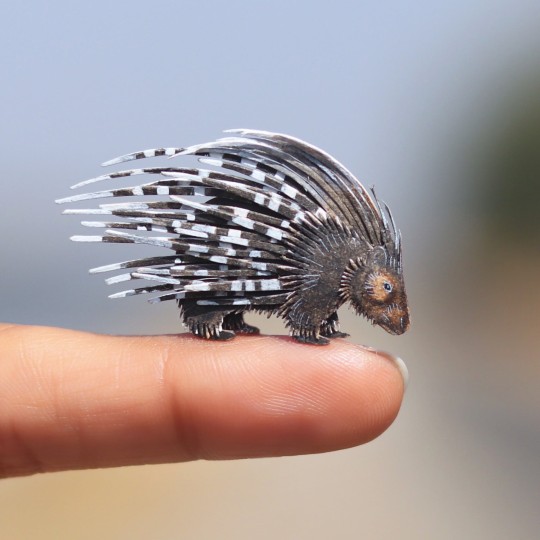
Crested porcupine
A Veritable Aviary of Birds and Pollinators by The Paper Ark Are Small Enough to Perch on the Tip of a Finger
Nayan Shrimali and Venus Bird, of The Paper Ark, approach conservation and environmental activism on a tiny scale. The artists (previously) create miniature renditions of flora and fauna that harness the textured, buildable potentials of paper to showcase the beauty and singularity of threatened and endangered species.

Great egrets

Endangered pollinators

Albino ruby-throated hummingbird
#nayan shrimali#venus bird#artists#art#aviary of birds#pollinators#nature#the paper ark#conservation#environmental activism#miniature renditions#flora#fauna#paper#paper sculptures
10 notes
·
View notes
Text
Listening to Nature's Best Hope by Douglas W. Tallamy and I feel really inspired. In this book, as well as in Braiding Sweetgrass written by Robin Wall Kimmerer, there is an important emphasis on healing the human relationship with nature.
A vast majority of humans have this idea that humans live here and nature is out there, which brings about a lack of compassion and understanding of the animals and plants that exist in the spaces that we occupy, as well. When humans think of natural spaces that are "worthy" of stewardship, they often think of national parks or forests, the There, and not about the songbirds in the trees outside their home or the insects in the grass of their yard or even the grass itself.
Nature is here. It is everywhere, or at least it should be. Humans benefit directly from the same ecosystems as other animals and when we buzzcut the already non-native grass into a short lawn because HOH said so, we rob ourselves of pollinators that will help healthy plants reproduce. We rob ourselves of healthy plants and the air quality diminishes. Erosion/flooding occurs more frequently. If we keep native plants planted in our yards, we attract native species that continue to keep the land healthy.
We humans need to learn to live together with nature, not apart from it. The idea that we aren't natural beings doesn't help, either. There are many groups of people that still follow the patterns of nature to survive. The flocks of birds, the movement of deer or elk herds, the blossoming and fruit-bearing of local tree species are not a forgotten knowledge. And I don't say this to sound like a hippie. What I mean to say is humans are natural and belong in nature just as much as any other species.
Creating biological corridors in our yards, our corporate spaces, and our cities is an important and necessary act of land stewardship and conservation. Plant native flora if you can. Get with your local conservation group and find out what species in your area are threatened and see what you can do to help, if anything. Volunteer to pick up trash or plant trees.
We can help. Don't give up.
#wildlife#conservation#nature#animal#animals#plants#flora#fauna#academia#ecology#native plants#invasive species#mother earth#pollinators#butterflies#wasps#bees#lawns#no lawns
7 notes
·
View notes
Text
“But there is a solution out there in pollinator-friendly practices,” Myers said. These include increasing flower abundance on farms, cutting pesticide use, especially neonicotinoids, and preserving or restoring nearby natural habitats. “When these have been studied, they pay for themselves economically through increased production.” Nonetheless, the researchers said “immense challenges remain” in restoring pollinator populations globally.
83 notes
·
View notes
Photo

A global phylogeny of butterflies reveals their evolutionary history, ancestral hosts and biogeographic origins
Kawahara, Storer, Carhalho, et al.
ABSTRACT
Butterflies are a diverse and charismatic insect group that are thought to have evolved with plants and dispersed throughout the world in response to key geological events.
However, these hypotheses have not been extensively tested because a comprehensive phylogenetic framework and datasets for butterfly larval hosts and global distributions are lacking.
We sequenced 391 genes from nearly 2,300 butterfly species, sampled from 90 countries and 28 specimen collections, to reconstruct a new phylogenomic tree of butterflies representing 92% of all genera.
Our phylogeny has strong support for nearly all nodes and demonstrates that at least 36 butterfly tribes require reclassification. Divergence time analyses imply an origin ~100 million years ago for butterflies and indicate that all but one family were present before the K/Pg extinction event.
We aggregated larval host datasets and global distribution records and found that butterflies are likely to have first fed on Fabaceae and originated in what is now the Americas. Soon after the Cretaceous Thermal Maximum, butterflies crossed Beringia and diversified in the Palaeotropics.
Our results also reveal that most butterfly species are specialists that feed on only one larval host plant family. However, generalist butterflies that consume two or more plant families usually feed on closely related plants.
Read more:
https://www.nature.com/articles/s41559-023-02041-9
#butterfly#lepidoptera#insect#entomology#science#animals#nature#pollinators#conservation#ecology#environment
250 notes
·
View notes
Text
"Protecting Our Food Supply: The Importance of World Bee Day"
"Happy World Bee Day! Let's protect these vital pollinators and ensure a healthy and sustainable future for our food supply and environment. #WorldBeeDay #Pollinators #Biodiversity"
This past Saturday, May 20, 2023, was the observance of World Bee Day. We should take the time to acknowledge the benefits and the importance of these tiny workers and recognize their vital role to the survival all life on this planet! Everyday is World Bee Day!
Rod W
World Bee Day is celebrated annually on May 20th to raise awareness about the importance of bees and other pollinators for our…
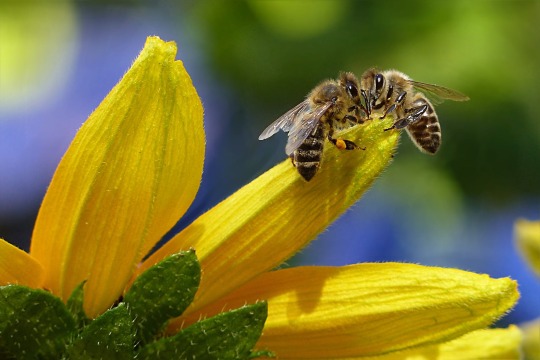
View On WordPress
#Bees#Biodiversity#conservation#ecosystem#food supply#habitat loss#pesticides#pollinators#sustainable farming#World Bee Day
21 notes
·
View notes
Text
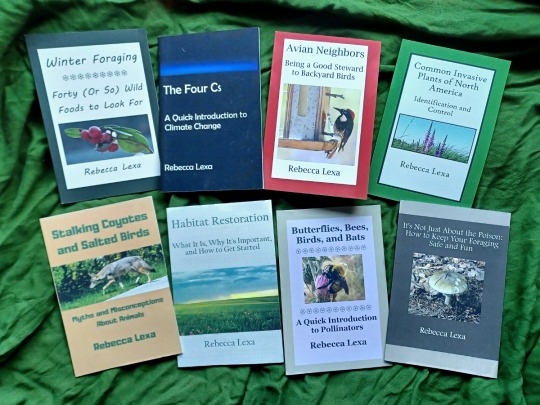
Wow--it's been two years since I started writing these quarterly chapbooks! I'm working on #9 as we speak, ready for release next month. It's been a fun project so far, a chance for me to deep-dive into some topics in a format longer than a blog post.
If you want to get the next one free in your inbox as an ebook (and the latest one on foraging safety as well), you can join my monthly email newsletter at https://rebeccalexa.com/news-updates/ - stick around, and you'll get a new ebook every three months. Or you can purchase paperbacks and ebooks of any of the chapbooks at https://rebeccalexa.com/chapbooks/ - thank you :)
#nature#nature books#natural history#foraging#climate change#birds#wildlife#pollinators#habitat restoration#invasive species#animals#ecology#environment#conservation#science#scicomm#chapbooks#self publishing
67 notes
·
View notes